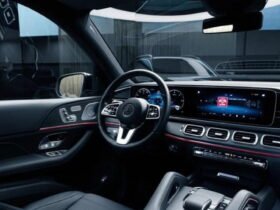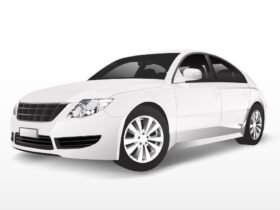Tyre maintenance is the most neglected part of an automobile, especially in small cars and bikes (and normally not in the cases of big trucks). Tyres are an important part of a vehicle as they help in moving the vehicle from point A to point B.
As it is common with most people that tires are neglected and the tires gain attention only when they alter the performance or the proper running of the vehicle. And when they show signs of wear then also they gain attention. So today’s topic is about maintenance and care of the different types of tires so that they can attain maximum life span and can last longer than usual.
Why maintenance of tyre is necessary?
The maintenance of tyres is a necessary task because frequent tyre changes will increase the running cost of the vehicle and the vehicle will not run properly on the road and will give problems at high speed running. Also, it can be dangerous and can lead to an accident at high speed. Driving ergonomics will be disturbed.
What do all include in tyre maintenance plan?
There are a few things that come under tyre maintenance. It can be perceived as per schedules or when the tyres show some abnormal signs. They are:
1. Wheel Balancing
Wheel balancing is the process in which the balancing of the weight of a tire and wheel is carried out. It is normal for tyres to become out of balance after a certain running period. Tyres can also become out of balance when they ran over big potholes and bad roads.
When is wheel balancing done:
Tire balancing is done when the tyre is out of balance. Out of balance tyre will cause the car to vibrate at certain speeds. A tire is called out of balance when one section of the tire is heavier than the others. An unbalanced tire or out-of-balance tire can be felt when the car is running at a certain speed and vibrations are felt on the steering.
This can also be felt at the corners of the cabin of the car. Suppose a front left tire is out of balance then it can be felt to the passenger sitting on the left at the front seat. In simple language, a car will bounce while running and passengers will feel a car is bouncing. Avoiding wheel balancing will cause uneven wear of tyres.
How the wheel balancing is carried out for optimal tyre maintenance:
There are two types of wheel balancing procedures. The first one is Static balancing and the second one is Dynamic balancing.
- Static balancing is pretty much only used by tire manufacturers now. The tire is placed on a device that basically uses a bubble level to show the direction and magnitude of the imbalance (there is always some). If found imbalanced then, weights are added to the wheel/tire assembly until it reaches optimal condition.
- Dynamic spin balancing actually spins the wheel and tire assembly, measure any deflection, and tell the technician how much weight to add and where to add it. This information is displayed on a computer screen.
The tyre is spinning for around 15 to 20 seconds. Low-speed spin balancers use high sensitivity sensors and spin at an RPM of 100. High-speed spin balancers (the most common type now) spin at about 300 RPM (road speed of about 60MPH) and use lower sensitivity sensors.
2. Wheel Alignment
Wheel alignment is a process that consists of adjusting the angle of wheels according to the specifications described by the automobile manufacturer. This is carried out so that the wheels are perpendicular to the ground and parallel to each other.
When is the wheel alignment done?
When the car is not running straight on a perfectly leveled road then the wheels are said to be misaligned. A simple way of testing this thing is driving at around 60kmph or more and moving off the hands from the steering (which is in the center position).
If the vehicle is moving straight then the wheels are meant to be aligned but if the vehicle tends to steer to the left side or to the right side then the wheels are said to be misaligned. Avoiding wheel alignment can lead to premature wear of tyres.
A small value of misalignment is not generally not noticed in practical but it is not good for the tyres. So it is advised not to wait for the misalignment of the wheels and see the signs of misalignment. It should be checked after every 5000kms.
How wheel alignment is carried out?
There are a number of parameters that are to be corrected while aligning the wheels. These parameters are known as angles. The angle values are displayed in degrees. The parameters are-
- Front: Caster (left & right)
- Front: Camber (left & right)
- Front: Toe (left, right & total)
- Rear: Camber (left & right)
- Rear: Toe (left, right & total)
A camera unit is attached to a specially designed clamp that holds on to a wheel. This setup is applied to all four wheels of the car. The camera units communicate their physical positioning with the accurate measurement with respect to other camera units to a central computer that calculates and displays. The central display is the computer which is connected to all cameras which are set up on all four wheels.
Heads can be a large precision reflector with alignment equipment. In this case, the alignment tower contains the cameras as well as arrays of LEDs (a set of LEDs). This system flashes one array of LEDs for each reflector whilst a camera centrally located in the LED array looks for an image of the reflectors patterned face. Performing the same function as the other style of alignment equipment.
There is a table on the main computer screen with all measurement applications. Any deflection detected on the wheels will be displayed on the computer screen with the exact deflection value.
The value will be in a red-colored bar which means it is out of the specified value. When the technician corrects the misalignment the values tend to decrease and the colour bar turns to green in color which means that the values are safe.
3. Tyre rotation
Tire rotation is the practice of changing the wheels and tires from their current position to different positions. Actually, this practice is done so that the tires can extend the life of themselves as front tires suffer more load than the rear ones because at the front the weight axle is more along with the weight of the engine and at the rear, the weight of axle is less. So the tyres at the front experience more load than at the rear. Also if Stepney’s tire is of the same dimension as all 4 tires, then follow the 5 tire rotation method. And if your spare tire is smaller in dimension than all 4 tires then follow up with the 4 tire rotation method.
This practice is different for front-wheel-drive cars and rear-wheel or four-wheel drive cars. It may be noted that the tyre rotation process for rear-wheel drive and all four-wheel drive is the same.
When it is done?
It is done usually at the time of wheel alignment and wheel balancing. Although 10000km is the prescribed schedule when the tyres are mean to be rotated. It is a good practice as all tyre will suffer the same amount of load and weight throughout their lives and which will lead to the increased lifespan of tyres and also prevent their uneven wear.
How it is carried out?
The process is very simple. It can be clearly understood by the images below:
4. Tyre Change
When it’s the right time to replace the tyres it should be replaced and should not wait for any disaster to occur. Yes, over-aged tyres can lead to tyre burst and can be a cause of the accident at high speeds (even at low speeds). One can easily confirm the overage of tyres by a visual inspection. Generally, tyre companies say their tyres can last up to 100000kms. But one should consider a statement that their predefined limit is under standard conditions and in real life it is not easily possible.
A good run for tyres is up to 60000km-80000km. Even these figures can be achieved when the tyres were undergone proper tyre maintenance schedule time to time that includes time to time wheel alignment, wheel balancing, wheel rotation. Changing tyres to new ones will ensure perfect cornering, maximum braking performance, and maneuverability on wet surfaces.
So it is best to change the tyre set when they are out of their life.
When it is done?
After 60000-80000km (Generally). Figures may vary depending upon tyre usage. Some riders ride their vehicle rough, doing stunts like burnouts,etc which drastically decreases the life of the tires. So it purely depends on the driving style. Also when the tread depth is lower than 1.5mm you should perform new tread depths technique on tire or change them.
How it is done?
Old tyres out. New tyres in. Just as simple as that.
5. Tyre Pressure
Always stick to the manufacturer’s recommendation. The tyre pressure should not be more and less than the prescribed specification. Low tyre pressure will decrease the life of the tyre and put more load on tyre whereas high tyre pressure will decrease the overall control of the vehicle. So its best to stick to the recommended tyre pressure for better maintenance.
6. Valve Care
The valve of the tyre should be protected by dust and water. They should be covered by a valve cap. Valve cap comes with new tyres but it can be purchased at a tyre shop. A valve cap will ensure an airtight seal and proper tyre pressure.
7. Tyre Rim
Make sure there is no dust and mud on the tyre rim. There should be no bends in the rim as it will decrease the performance of the tyre and there will be difficulty in running depending upon how large is the bend.
These were the process you should perform so as to keep your tyres healthy and to last longer than usual. If you follow all the rules listed above your tire life will expand and you may run your tires more km( leave aside tread depth). Nothing more than this to do on tires.























